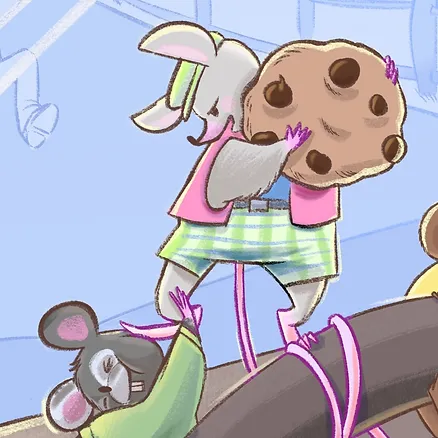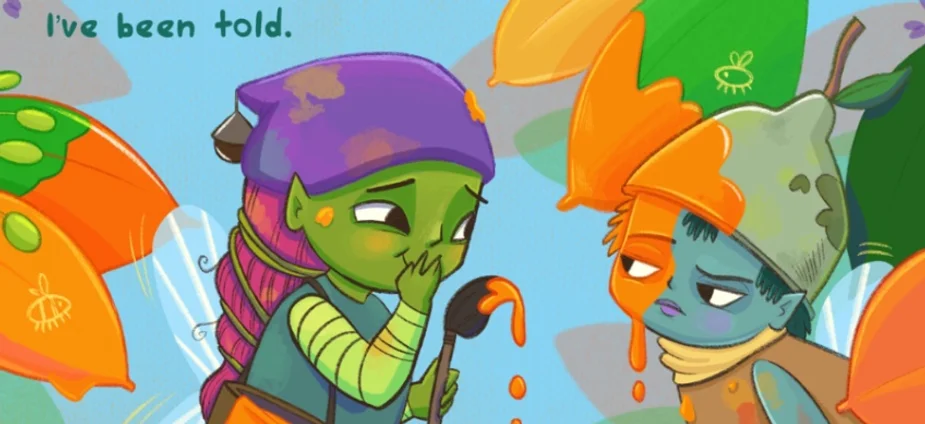Drawing Gesture to Build Story and Emotional Literacy
By drawing gesture, picture book illustrators give parents & teachers a powerful tool to teach feelings and explore emotional literacy for kids.
Gesture drawing is one of those essential art skills that children’s book illustrators spend years learning and mastering, but that we don’t often explain to readers. Did you know for example, that by drawing gesture in kids’ illustrated books, artists are both storytelling AND helping children build emotional literacy? Drawing gesture packs a real punch!
What I mean by “drawing gesture”
Drawing gesture from the artist’s perspective
How parents & educators can use gesture to teach feelings of all kinds
Emotional activities for preschoolers

Gesture helps illustrators tell stories and give readers insight into a character’s emotional journey.
I’m constantly drawing gesture so I’ve also shared lots of my own artwork in this post to help you understand gesture and its power.
What do I mean by “Drawing Gesture”?

Drawing gesture allows artists to explore characters’ inner journey. What a great way to introduce kids to emotional literacy!


NO GESTURE. We have great information here about what Ophelia looks like, but there is no body language, barely any facial expression and no direction or movement.
WITH GESTURE. Now this is more like it! While we can’t clearly see what Ophelia’s outfit looks like in this loose sketch, I have used gesture line and movement to show that she is excited, she is happy, and she is trying to see something in the distance. This happens to be the moment when Ophelia first sets eyes on the ocean so it’s a chock full of story and emotion.
Drawing gesture is a super important tool in visual storytelling. You can spotlight characters’ gestures to teach feelings and build emotional literacy for kids.


NO GESTURE. This is a character study of Santa that I did, figuring out his shapes and outfit. He’s holding a pen, but aside from that, there is no gesture.
WITH GESTURE. Here’s Santa with TONS of gesture! Two rascaly elves have just played a practical joke on Santa, so not only is he feeling pretty cranky, he’s also in hot pursuit of his tormenters! This illustration gives us way more insight into Santa’s personality, tells a story and gives us lots of clues about how he’s feeling.
how the character is feeling
what the character is doing
What is Emotional Literacy?

By drawing gesture, illustrators can show how emotions change and how characters feel about each other
The great thing about picture books is that they help kids develop their emotional literacy and their visual literacy through a fun and engaging activity. Let’s review how gesture in particular can help kids increase their emotional literacy.
Using Gesture in Kids Illustrated Books to Teach Feelings

Drawing facial expressions is one tool that artists use when storytelling and establishing emotions.
Help children interpret the feelings of others with context and cues.
Understand that feelings change.
Explore why feelings changed.
Build Important Emotion Vocabulary
Teach Feelings that are more Subtle or Complex
Normalize Talking About Feelings Together
Discussing gestures shows that it’s healthy and normal to talk about emotions, even if they are negative, strong, or challenging to describe.
Emotional Activities for Preschoolers
Place brightly colored sticky notes next to different characters in your book. Ask your child what emotion that character is feeling and write that feeling on the sticky note.
Find a moment in your picture book where a character’s feelings change. Ask you child how they felt at first and then how they felt next.
After reading a picture book with your child, stable together a few pieces of paper into a book. Ask your child to draw pictures of how the characters’ feelings changed throughout the story.
Do the same as above, but ask your child to draw their own feelings as they read the story.
On brightly colored sticky notes, either have your child draw faces expressing different feelings or draw them yourself. Then, ask your child to go through their picture books and place the sticky notes next to characters with each of those feelings.

So much work goes into drawing gesture. From the very first sketches, illustrators are trying to capture emotions with gesture lines, body language and more.
I am drawing gesture all the time! Here are some examples.

I enjoyed drawing gesture in this illustration to show my characters’ strong emotions.

I focused on drawing gesture in these early sketches to figure out how my ghost moved. You can see all the gesture lines that go into rough sketches.

Drawing gesture is a useful storytelling tool, particularly when 2 or more characters are interacting.

I often use gesture to figure out a character’s personality. How do they move? How do they stand? Drawing gesture is a great way to figure out who a character is.
Drawing Gesture to Help Teach Feelings
READ MORE
Read more about my artistic process and being creative with your kids here:

